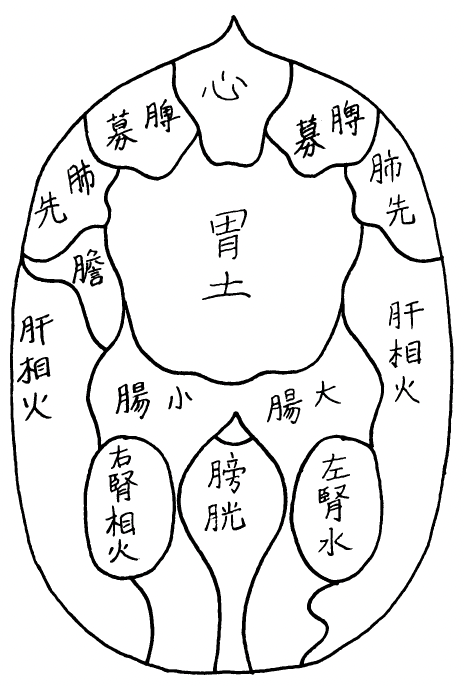Traditional Japanese Medicine
History
Traditional Japanese medicine (TJM) has developed over a thousand years, incorporating Classical Chinese medical practices to create a unique system suited to Japan's culture and environment. The roots of TJM can be traced back to the 6th century when Buddhism was introduced to Japan. During the Nara (710–794) and Heian (794–1185) periods, the Japanese imperial court actively supported the study and practice of Chinese medicine, establishing government-run medical schools for translating and adapting Chinese medical texts. During the Edo period (1603–1868), acupunctureand moxibustion gained widespread popularity in Japan as effective and accessible forms of healing. Throughout the years Japanese practitioners refined these techniques, making them distinctively different from their Chinese practitioners while adhering to the traditional Chinese texts.
Blind TJM practitioners, known as "Anma" or "Hari," played a pivotal role in shaping the practice of acupuncture in Japan, particularly from the Edo period onward. Trained in acupuncture and moxibustion, these practitioners used their heightened sense of touch for diagnosis and treatment. Their tactile-based approach led to a more refined palpation technique, enabling them to identify channel points and areas of muscular tension precisely. The influence of Japanese acupuncture, with its emphasis on subtlety, refinement, and precision, has led to a gentler approach, focusing on minimal needle insertion and less stimulation than traditional Chinese techniques.
Key Differences Between Japanese and Chinese Acupuncture & Moxibustion
Japanese and Chinese acupuncture share the same roots in classical Chinese medicine, but they have evolved distinctly, resulting in noticeable differences in their techniques and treatment approaches. In summary, Japanese acupuncture and moxibustion provide a gentle and highly refined form of treatment that focuses on sensitivity, minimalism, and hands-on diagnostic methods. This approach is ideal for patients who prefer a lighter touch, are sensitive to strong stimulation, or seek a treatment style that emphasises subtlety and precision. Here’s an overview of the main differences:
1. Diagnostic Approach In Japanese Acupuncture:
Diagnosis often emphasises palpation techniques, especially abdominal palpation ("Hara" diagnosis) and channel palpation. This hands-on diagnostic method lets practitioners detect subtle imbalances and guide the treatment plan. A gentle touch is crucial in selecting acupuncture points and assessing the patient's response throughout the treatment. In Japan, blind practitioners have significantly shaped the development of acupuncture, emphasising refined palpation techniques to diagnose and treat conditions. Their contributions have led to a uniquely tactile approach central to Japanese acupuncture (Image: Mubunryuhara diagnosis).

2. Japanese Acupuncture
Japanese acupuncture is a patient-centred modality with gentler needle insertion techniques. It uses finer, thinner needles inserted superficially than in Chinese acupuncture to reduce discomfort while effectively stimulating acupuncture points. During the treatment session, a Japanese traditional medicine practitioner remains with the patient, conducting diagnosis and treatment in real-time. The practitioner continually assesses and adjusts the selected treatments, ensuring they are effective by monitoring the patient's response throughout the session.
Additionally, Japanese acupuncture includes specialised techniques like Shonishin, a non-invasive method designed for children that uses gentle tapping, stroking, and pressing on the skin to stimulate Qi (気, Ki) using specialised tools without needles.
Additionally, Japanese acupuncture includes specialised techniques like Shonishin, a non-invasive method designed for children that uses gentle tapping, stroking, and pressing on the skin to stimulate Qi (気, Ki) using specialised tools without needles.
3. Japanese Moxibustion
In traditional Japanese medicine, acupuncture and moxibustion are commonly used together as fundamental practices, showcasing the integration of these two modalities as a key feature of this approach. Japanese practitioners frequently incorporate moxibustion extensively, applying smaller amounts of moxa to warm specific points on the body gently. The practice emphasises subtle warming rather than intense heat, making it more suitable for sensitive individuals. Techniques like "direct moxibustion" (tiny cones of moxa applied directly to the skin) are common and highly refined. In my practice, however, the treatment approach is tailored to each patient. I often combine both acupuncture and moxibustion for a more holistic healing experience.
get in touch
Have any questions about Acupuncture and Moxibustion treatments? Sara is available to discuss your health concerns and treatment options.
